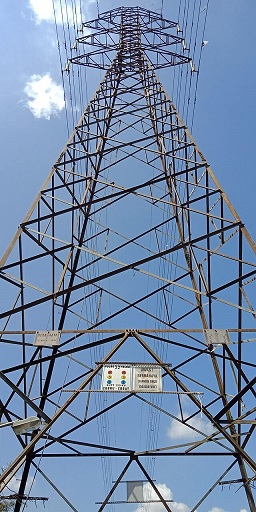How to do the selection of transmission and distribution voltage? But, have you ever wondered how these voltages are determined? How did the power companies realize that these amount voltages would work for us? Today, the article has been arranged in this regard. Let’s get started.
In fact, in books, on various websites, we see all the time the transmission voltage is 33, 132, 230, 400 kilovolts. Again, the secondary distribution voltage in the residential area is 400/230 volts.
Economic Transmission Voltage
Now, for each transmission/distribution line there is an acceptable limit of high voltage beyond which there is never any economic benefit. Therefore, the transmission voltage required to keep the value of conductors, insulators, transformers, switchgear, and other equipment to a minimum is called economical transmission voltage.

Factors for determining transmission/distribution voltage
- In the case of transformer- Now, in the aspect of specific power transmissions, the value of the transformer connected to the generation and receiving ends tends to increase as the transmission voltage increases.
- Lightning Arrester- Furthermore, as the transmission voltage increases, the size of the Lightning Arrester increases. Similarly, the price increases.
- Insulator and Support- Here, as the transmission voltage increases, so does the size and cost of the insulator.
- Conductor- Conductor size is disproportionate to the transmission voltage. Now, as the transmission voltage increases, the conductor size decreases and the cost decreases.
Transmission/Distribution Volt Determination Formula
However, there is a formula for determining the transmission/distribution voltage. It depends on how long the load and transmission line will travel or the length of the transmission line.
The formula for determining the transmission line voltage:
Transmission Voltage = 5.5 √km/1.61 + load in KVA/150
Now, I will determine the transmission line voltage for a 500 kVA, 50 km long line.
Power = 500 KVA, Length = 50 km
Transmission Voltage = 5.5 √ (50/1.61 + 500/150) = 32.25 kV
Length of transmission line vs. voltage
- Normally 11 kV for 15 Km transmission line
- Typically 11-22 kV for 15-30 Km transmission line
- Usually 33-66 kV for 30-80 Km transmission line
- Typically 66-110 kV for 80-120 Km transmission line
- Usually 110-132 kV for 120-160Km transmission line
- Typically 110-154 kV for 160-240 Km transmission line
- Usually 132-220 kV for 240-400 Km transmission line

How to do the selection of transmission and distribution voltage? Lastly, I hope that you have got the answer to the above question. For instance, it actually is not something that people usually think about. But, actually when a question arises, getting the answer in the simplest way is the most soothing.
Check More Articles:


